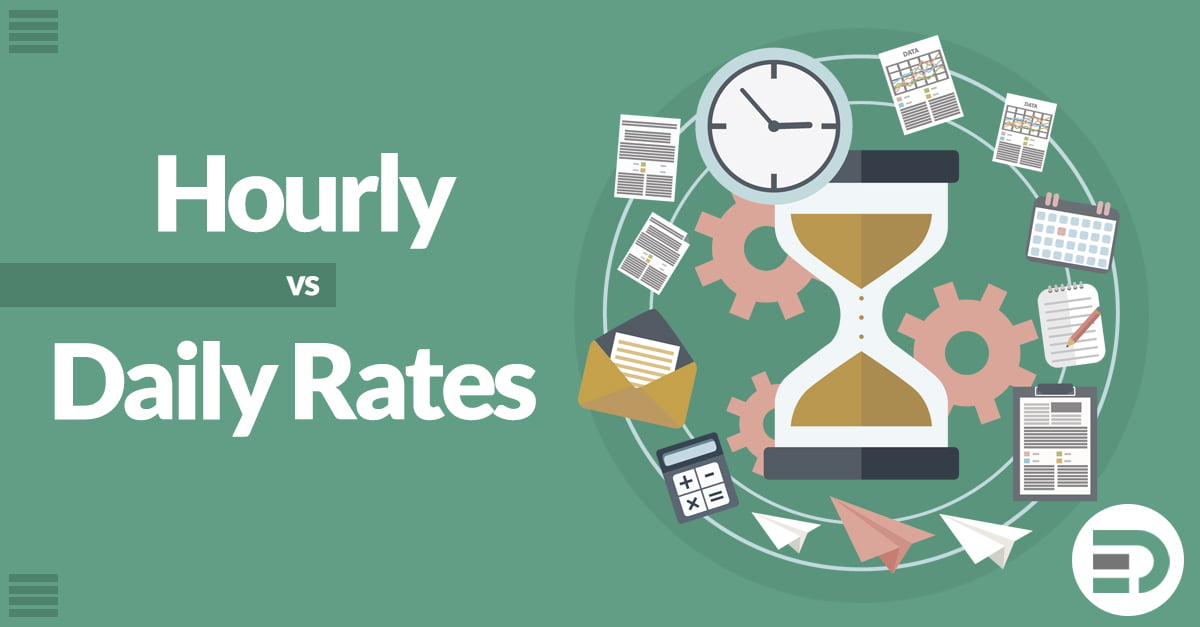Hourly vs Daily Rates: Navigating Payment Structures in Contracting
In the world of contracting, determining the most effective payment structure—whether to opt for hourly or daily rates—can significantly influence project management, budgeting, and overall workflow efficiency. Each payment model offers distinct advantages and challenges, and understanding these can help businesses and contractors make choices that align with their operational goals and work styles.
Understanding Daily Rates
Daily rates are a common payment structure, particularly in industries like consulting, creative fields, and IT. Under this model, a contractor is paid a fixed rate per day, regardless of the number of hours worked. This could mean working a standard eight-hour day or stretching to longer hours during intensive project phases.
Advantages of Daily Rates
1. Simplicity and Predictability: Daily rates simplify invoicing and budget planning. Businesses can predict costs without having to account for hourly variances, which can be particularly advantageous in projects where the scope is somewhat fluid, but the timeline is tight.
2. Flexibility for the Contractor: For contractors, a day rate can provide flexibility in managing their workday. If they complete their tasks in less time than a standard workday, they still receive the full day’s pay, which can be a significant incentive.
3. Encourages Efficient Work: Since the pay is the same whether the day is long or short, contractors are often motivated to work more efficiently to free up their time, potentially increasing productivity.
Challenges of Daily Rates
- Potentially Higher Costs: Because day rates must account for potentially longer workdays, they are typically set higher than hourly rates for equivalent hours. This means that if a contractor works fewer hours, the effective hourly rate becomes quite high and therefore not always be cost-effective for the business.
- Less Granularity in Billing: Daily rates offer less granularity than hourly rates, making it more challenging to justify costs against specific tasks, especially in projects where work hours might vary significantly from day to day.
Understanding Hourly Rates
Hourly rates are straightforward: contractors are paid for each hour worked, providing a direct correlation between work performed and payment received. This model is particularly prevalent in freelance work, technical services, and other professional services where tasks can vary significantly from one day to the next.
Advantages of Hourly Rates
1. Flexibility and Fairness: Hourly rates ensure that payment is directly tied to the amount of time spent on a project, which can be fairer for both the contractor and the client. This system is particularly beneficial in on-demand contracting, where work may not be consistent day-to-day.
2. Easier to Adjust Workload: With hourly rates, it’s easier to scale work hours up or down based on real-time project needs without renegotiating payment terms. This can lead to better resource utilization and cost efficiency.
3. Transparency and Accountability: Hourly billing can enhance transparency, as clients can see exactly how much time is being spent on different tasks. This can help build trust and provides a clear basis for invoicing.
Challenges of Hourly Rates
- Administrative Overhead: Tracking and managing hourly billing can require more administrative effort, both for contractors keeping detailed logs and for clients who must verify and process these logs.
- Potential for Higher Costs in Long Days: If a project requires long hours over several days, hourly rates can end up costing a client more than a day rate would have, particularly if the workload is heavy and the project scope is not well-defined.
Choosing Between Hourly and Daily Rates
Deciding between hourly and daily rates should involve considering the nature of the project, the typical working hours required, and the level of budget predictability that the client or contractor needs. Hourly rates might be preferable for on-demand work and projects with variable scopes, while daily rates could be better suited to projects where the work is intensive and days can be long but relatively predictable.
In conclusion, neither hourly nor daily rates are inherently superior; the best choice depends on the specific circumstances and needs of the project and the working relationship. Clear communication and a mutual understanding of expectations are key to selecting the right payment structure.
For more insights into making the best technology partnership choices for your business, follow #ElementDigital on Linkedin or reach out: Contact Us








Leave A Comment